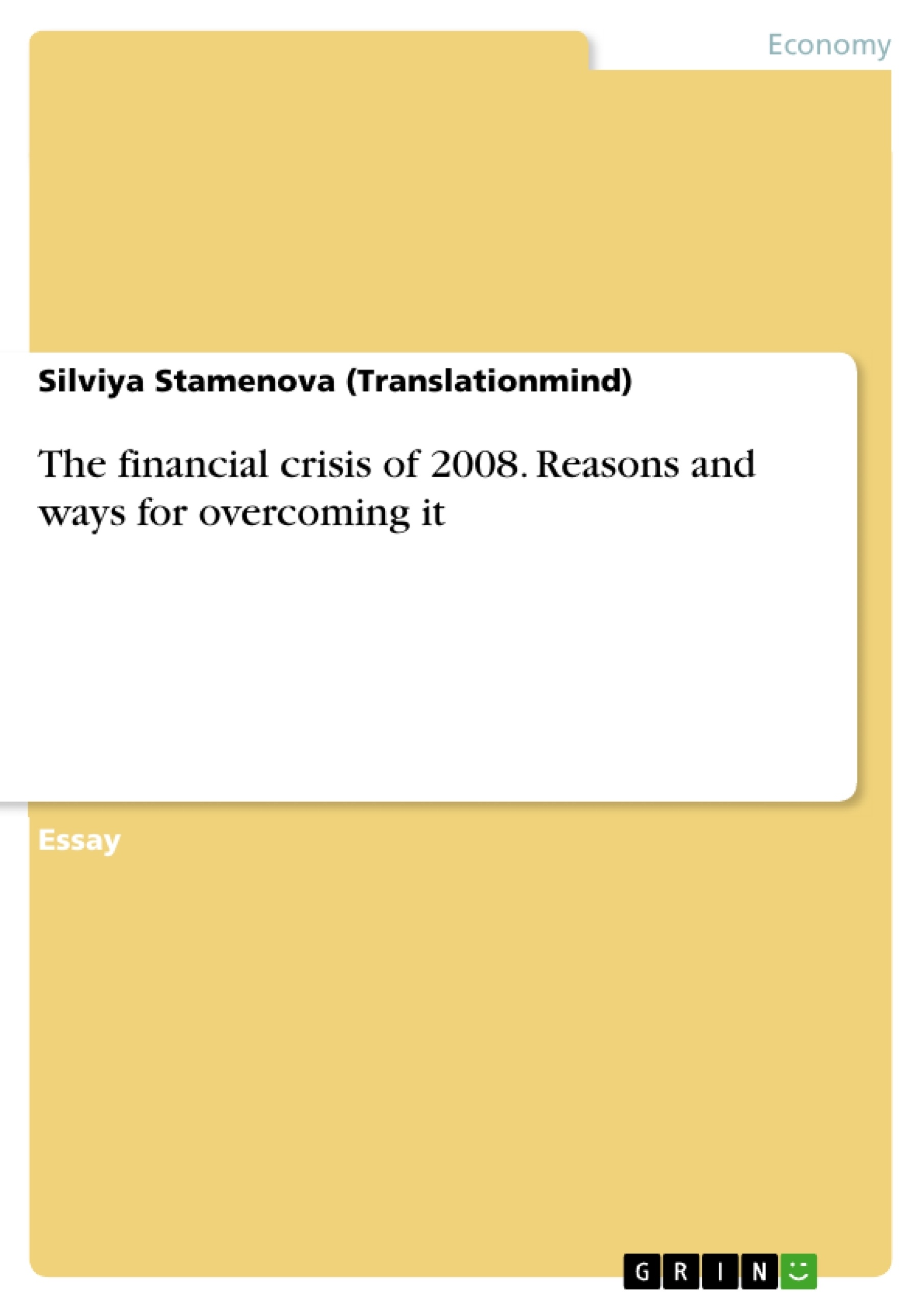The financial crisis, which began in the USA loan market in 2007, has caused significant turmoil and uncertainty in the global financial system; the banks granted mortgage loans, as the properties they bought were participants in the price bubble - so they granted loans and in return received guarantees with real price lower than the value of the loan. As Buckley (2011) states, that led to three major consequences: a bubble in the house prices in the USA, in the UK and all over the world, an increased debt and an increased spending. As a lot of money were present into the economics (the lending on part of the banks was easier) they had enough resources to sell. The weakness of the American currency was also regarded as a potential source of the 2008 recession. In brief, the latter made the American financial sector highly exposed to the currency-hedge instruments that ultimately led to the crisis.
Inhaltsverzeichnis (Table of Contents)
- Reasons for the financial crisis of 2008 – ways of overcoming it
- Who is to be blamed for the financial crisis of 2008?
- The weakness of the dollar, itself made the financial sector of the United States of America accommodate to it
- Other authors claim (Grigor'ev, L and Saliklov, M. 2009) that the decline in the economic sectors of the U.S economy was detrimental to the operation of the financial markets.
- Another extraordinary survey puts the blame for the recession on the people who have few or no children.
- However, when one thinks carefully about the root causes of the recession of 2008 it become obvious that they are more general and that similar problem exists in other areas.
Zielsetzung und Themenschwerpunkte (Objectives and Key Themes)
This text explores the various factors that contributed to the 2008 financial crisis, providing different perspectives on the root causes. It aims to analyze the key events and decisions that led to the crisis and examine the potential solutions for avoiding such economic collapses in the future.- The role of low interest rates and their impact on housing bubbles
- The impact of a weak dollar on the U.S. financial system
- The influence of declining economic sectors and productivity on financial markets
- The potential link between declining birth rates and economic stagnation
- The shortcomings of regulatory policies and their contribution to the crisis
Zusammenfassung der Kapitel (Chapter Summaries)
The text begins by outlining the immediate consequences of the 2008 financial crisis, focusing on the housing bubble and its impact on global markets. It then delves into the role of low interest rates in creating the conditions for this crisis. Further chapters explore the impact of a weak dollar, decline in economic sectors, and declining birth rates on the financial system. The author concludes by highlighting the broader consequences of the crisis and emphasizes the need for more comprehensive policy solutions to prevent future financial collapses.Schlüsselwörter (Keywords)
The main keywords of the text are financial crisis, housing bubble, low interest rates, weak dollar, declining economic sectors, birth rates, economic stagnation, regulatory policies, and global financial system. These concepts highlight the key themes and perspectives explored in the text, providing a comprehensive understanding of the 2008 financial crisis and its lasting impact.- Citation du texte
- Silviya Stamenova (Translationmind) (Auteur), 2017, The financial crisis of 2008. Reasons and ways for overcoming it, Munich, GRIN Verlag, https://www.grin.com/document/437266



